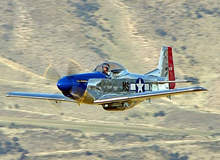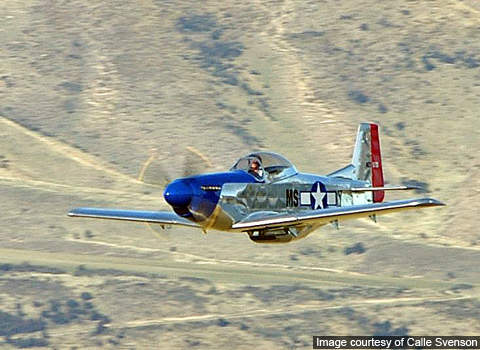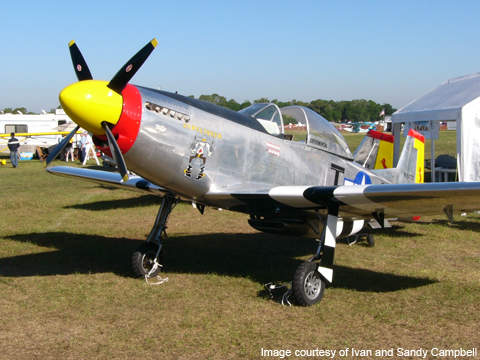The T-51 Mustang is a single-engine, two-seat aerobatic aircraft designed and manufactured by the Titan Aircraft Company, US. It is derived from the P-51 Mustang. It is a low-wing aircraft constructed with blind rivets (also known as pulled rivets) and structural adhesives.
T-51 design
The T-51 was designed in accordance with light sport aircraft (LSA) standards.
It is made up of aluminium and steel instead of composite materials to minimise cost and assembly time.
The aircraft adopts lightweight construction techniques and advanced systems to fly expeditiously compared to the P-51 Mustang.
Initial development of the Mustang
The development of T-51 began in September 2001. The maiden flight of the aircraft took place in June 2002.
The T-51 obtained a license to operate as a light sport aircraft in November 2005. An advanced version, the T-51B Razorback, was first delivered to a UK customer at 2009 AirVenture, an aviation convention, held in July 2009.
Aircraft features
The T-51 features spars, aileron pushrods, wing leading edges, main landing gear hydraulic cylinders, main landing gear oleo struts, wheel tire and brake assemblies, main fuel tanks, landing gear position indicators and warning light and centre fuel header tank.
It is also fitted with a horizontal stabiliser, vertical stabiliser, elevator trim indicator, fibre glass wingtips, elevator and horizontal tips, seat belts and shoulder harness.
The aircraft’s kits can be supplied in five sub-kits: main wing (outer panel) kit, centre wing kit, fuselage kit, empennage or tail kit and finish kit.
The avionics and power plant kits are supplied based on the customer’s choice.
Cabin of the T-51
The cockpit / cabin of the T-51 boasts two seats in a tandem seat configuration to accommodate a pilot and passenger. The specially built canopy renders clear visibility to the flight crew.
The width of the cabin is 0.6m. The headroom and legroom of the cabin are 0.96m and 1.16m respectively.
Mustang avionics
The avionics suite installed in the T51 includes a King 155 navigation and communication system, King 76C transponder, emergency transmitter locator (ELT), Garmin 296 global positioning system (GPS), engine monitoring instrumentation, flightcom intercom, headsets, dual flight control systems and instrument landing system (ILS).
The aircraft is also incorporated with Dynon 10A electronic flight instrumentation system (EFIS) supplied by Dynon Avionics. The EFIS features colour displays comprising six buttons at the bottom.
T-51 Mustang engines
The T-51 is powered by a single Rotax 912ULS/3 engine rated at 75kW of output power.
The 912ULS/3 is a four stroke and four cylinder air cooled engine designed and manufactured by BRP Rotax of Austria.
It features electronic dual lighting, electric starter, propeller speed diminution gear box, engine mount assembly, two carburettors, mechanical fuel pump, air intake and exhaust system.
The engine is also fitted with an external alternator of 12V DC. A single whirlwind four bladed constant speed propeller drives the engine. The propeller can rotate at a rate of 5,800rpm.
The dry weight of the engine is 56.6kg and the displacement is 82.6 cubic inches (2m³).
Landing gear
Integrated with a fixed tricycle type landing gear, the T-51 can be piloted by a Sport Pilot certified pilot in the US. The landing gear is made up of steel and comprises three wheels (two below the wings and one below the tail section), landing gear emergency extension valves and a hydraulic brake system.
The aircraft can also be fitted with a retractable landing gear that can be operated by experienced, rated pilots.
Performance and power
The T-51 can climb at the rate of 6.1m/s. The maximum and cruise speeds of the aircraft are 317km/h and 241km/h respectively. The stall speed is 63km/h. The range and service ceiling are 1,159km and 5,486m respectively.
The take-off and landing rolls of the aircraft are 91m. The aircraft weighs around 385kg and its maximum take-off weight is 658kg.




